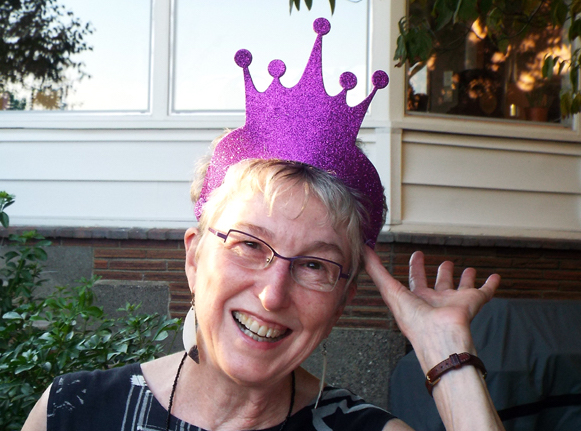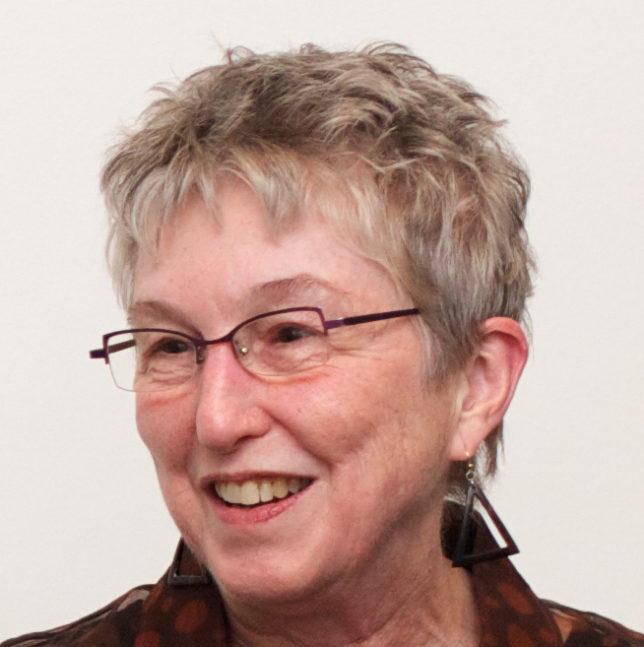I’m currently a writer, organizer, and advisor who has had a full work life without ever having a job that someone had before me; either the job was new or I made it up – the role or the organization. My focus has been in the arts and civil society. I’ve worked full-time, part-time, and on contract and have served as founder, director, writer, editor, consultant, collaborator, manager, and educator in nonprofit, for-profit, government, freelance, and informal settings. I post my writing and short essays on my website, “Carrying On” <annefocke.net>.
I work with words and ideas, sometimes alone, but more often in concert with others. I’m an intentional generalist and always have new things in mind. I’ve never had an easy time describing my work, though at the beginning I simply assumed that, among other things, I was an artist. Lately, I’ve realized that it’s still an integral part of my identity. I’m glad to be in my 70s, exploring this phase of my life with enthusiasm and purpose and with wonderful colleagues, friends, family, and two grandkids.
You can reach me at <aafocke@gmail.com>.

More specifics
I’m finishing my third and final year with the Jini Dellaccio Project, a pilot project for older artists that I co-founded with Sarah Cavanaugh, a writer, photograper, and active philanthropist. With that backing, I’ve been able to develop my writing, create a year-long residency as the inaugural Alum in Residenceat the University of Washington’s School of Art + Art History + Design, establish regular bi-monthly open office hoursgiving me the chance to share my experience with others and gain new knowledge myself, and give time and energy to Common Field, a new national network for artist spaces and arts organizers.
I was the first executive director of Grantmakers in the Arts (1999-2008) and co-editor of its journal, the GIA Reader (1991-2009). Among others, my current and recent contract work includes editing for Lucy Bernholz, “philanthropy wonk” and founder of the Digital Civil Society Lab at Stanford (2010-present); planning and editing for the Community Democracy Workshop (2010-2015); and facilitating retreats for Copper Canyon Press and SOIL, an artist collective.
I’ve founded or helped develop nonprofit, for-profit, and informal enterprises including the Jini Dellaccio Project (2016-present); Penny U, a conversation series about civic issues with Town Hall Seattle (2014-present); the Community Democracy Workshop (2009-2014); What’s Up?, an informal monthly conversation series with artist Carolyn Law (2002-2013); Arts Wire, a national online network for the arts (1989-1995); Artist Trust, a 30-year-old nonprofit organization supporting Washington state artists (1986); Artech, a 40-year-old for-profit art handling company (1978), and and/or, an artists’ organization (1974-1984).
My published writing includes: “Unpaid, in Spite of Their Value,” in a Pacific Standard column titled, “The Future of Work and Workers” (2015); “Imaginary Needs and a Raucous Caucus,” commissioned by Grantmakers in the Arts for its Reader(2015); Philanthropy and the Regeneration of Community Democracy,” co-author with Peter Pennekamp, published by the Kettering Foundation (2013); Trimpin: Contraptions for Art and Sound, general editor and author of the introductory essay, published by University of Washington Press (2011), and others.
I was the first staff person for the City of Seattle’s arts agency, first director of its public art program, and director of Bumbershoot (the City’s annual arts festival) the year it got its name. I was the first assistant in education at the Seattle Art Museum and received a BA in Art History from the University of Washington in 1967. The Anne Focke Gallery in Seattle’s City Hall acknowledges my contributions to the city, where I’ve lived for over 50 years.
And if you want even more detail, click here.

Very nice to see this, Anne, as your thoughts and comments have always been wonderfully stimulating. I love the play of “carrying on”, even though you might be the single most polite person I’ve ever met in terms of the “acting out” as opposed to “continuing” definition of the phrase.
I find myself in the midst of my tenth year working at the University of Michigan’s Institute for Social Research, still spending a fair amount of my time and energy managing the Michigan Surveys of Consumers, which assesses and predicts change in the economy. I find I remain fascinated after my time here by the idea that I am supposed, no, required to think in terms of risk management to ensure the projects I work on have the best chance to succeed versus the more typically arts-oriented way of diving in and looking for water in the pool later, and trying to constantly stretch and redefine meager resources to accomplish as much as possible. There are very intriguing differences between artistic endeavor and scientific research, even though many of the aspects and intents are similar, and I think perhaps the core difference lies in the latter’s insistence that something be repeatable and thereby verifiable versus the arts desire for uniqueness. But of course artistic endeavor also always has a context, historical precedence, and its practitioners are every bit as precise as those engaging in science.
But that’s probably heading too deep for me in the morning, before coffee.
I thank you for the link, for the endeavor, and wish the very best to you going forward. I have deeply treasured the many things I learned working with you.
It’s so nice to hear from you, Joe, and to learn what you’ve been up to since Arts Wire. It’s great to read your take on the contrast between artists’ and scientists’ work, especially as it relates to managing risk. You might be interested in the work of a friend of mine from decades ago, Annie Searle, whom I first knew when she was working at the Seattle Art Museum. For at least six years, she’s been an independent risk consultant and researcher and now teaches at the University of Washington. She has a blog titled, “Advice from a Risk Detective.” Her post from September 29, just before she began her class, started with a quote from Against the Gods: The Remarkable Story of Risk, by Peter L Bernstein:
“The revolutionary idea that defines the boundary between modern times and the past is the mastery of risk: the notion that the future is more than a whim of the gods and that men and women are not passive before nature.”
But maybe, since this is your field, you know all about this. I find it fascinating.
Thanks for writing!
Joe! Let’s reconnect! I’m in Dallas at SMU at the National Center for Arts Research!
Hello,
Well. I’m just 66 and of the mind that I will not retire and that I’ll continue as a photographer until I can’t, for whatever reason.
Along those lines, I’m working on a long term project; 40 Miles of Water: The Seattle Waterfront and Duwamish Waterway, that I’d like to exhibit, in a traditional gallery space and an on-line display.
I’ve recently applied for a grant here: http://www.luminous-endowment.org/grants/current/1/1255 which will give you a project description and 12 photographs from the portfolio to date.
Also several more images at my website: http://www.GarySutto.com.
Thank you. And, let me know if get a chance to visit either site.
Best,
Gary Sutto
Remember coming up here to curate that show at the Visual Arts Center in 1989, Anne? You went to Homer and Valdez, Seward and maybe Seldovia…and everyone who wanted to share something about the Exxon Valdez Oil Spill was given entry to that show. I loved it. I still remember a gigantic tiger, a small boat on the water filled with people, with the words, “I have heard about the Dream, but I have lived the Nightmare,” a reference to Exxon’s ads about Alaskans achieving their dreams through the riches provided by oil sales…and, of course, the spill.
The VAC went under in, I think, 1992, but so many of the artists who worked there, who showed there, have stayed on and made things happen here in Anchorage. There’s a lot going on in Spenard, for example, a section of town that used to be our tenderloin. Artists are working with Cook Inlet Regional Corporation to come up with good design ideas for low-cost housing. Sheila Wyne is a leader there. And there are lots of small galleries, even one in the foyer of a real estate company.
It’s always a welcome moment to see your name in my email, Anne. And to get a glimpse of your curiosity and where it leads you now and then…
What a nice memory to bring back, John! I certainly do remember that show and my trips to (I think) Homer, Seward, Cordova, Kenai, and Kodiak. I was supposed to go to Valdez, but was snowed out. In Cordova I remember getting a bit snowed in and I stayed with a bookstore owner who was also housing Libby Riddles of Iditerod fame. Her lead dog was with us too. Your memories of the show bring back the spirit of it! And it’s wonderful to hear how the spirit of VAC continues on!